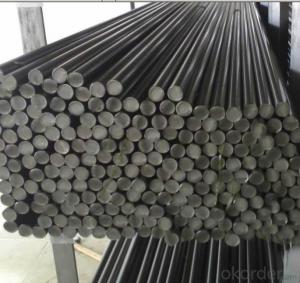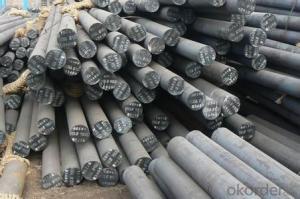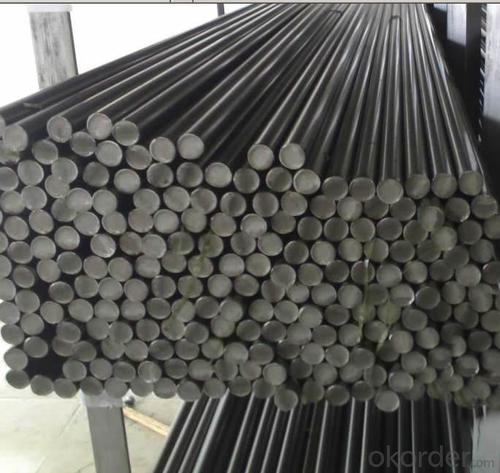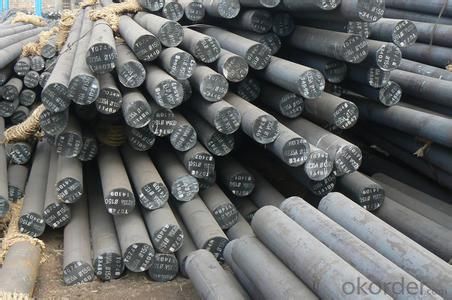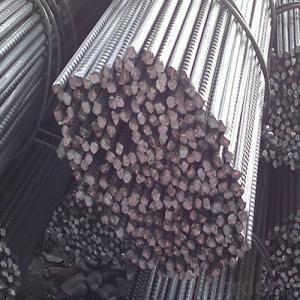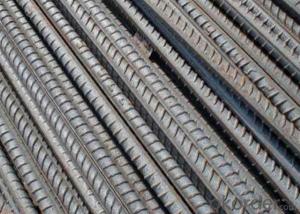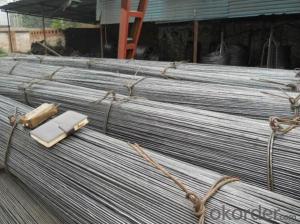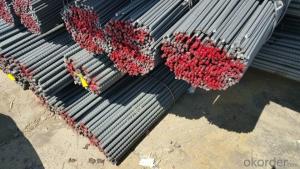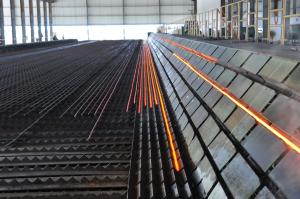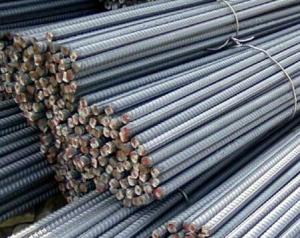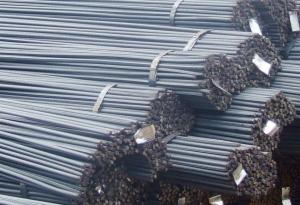Hot Rolled Deformed Steel Bar HRB400
- Loading Port:
- China Main Port
- Payment Terms:
- TT or LC
- Min Order Qty:
- -
- Supply Capability:
- -
OKorder Service Pledge
OKorder Financial Service
You Might Also Like
Product Description:
OKorder is offeringDeformed Steel Bar at great prices with worldwide shipping. Our supplier is a world-class manufacturer of steel, with our products utilized the world over. OKorder annually supplies products to European, North American and Asian markets. We provide quotations within 24 hours of receiving an inquiry and guarantee competitive prices.
Product Applications:
Deformed bar is widely used in buildings, bridges, roads and other engineering construction. Big to highways, railways, bridges, culverts, tunnels, public facilities such as flood control, dam, small to housing construction, beam, column, wall and the foundation of the plate, deformed bar is an integral structure material. With the development of world economy and the vigorous development of infrastructure construction, real estate, the demand for deformed bar will be larger and larger..
Product Advantages:
OKorder's Deformed Steel Bar are durable, strong, and resist corrosion.
Main Product Features:
· Premium quality
· Prompt delivery & seaworthy packing (30 days after receiving deposit)
· Corrosion resistance
· Can be recycled and reused
· Mill test certification
· Professional Service
· Competitive pricing
Product Specifications:
Chemical Composition: (Please kindly find our chemistry of our material based on HRB400 as below for your information)
Grade | Technical data of the original chemical composition (%) | ||||||
C | Mn | Si | S | P | V | ||
HRB400 | ≤0.25 | ≤1.60 | ≤0.80 | ≤0.045 | ≤0.045 | 0.04-0.12 | |
Physical capability | |||||||
Yield Strength (N/cm²) | Tensile Strength (N/cm²) | Elongation (%) | |||||
≥400 | ≥570 | ≥14 | |||||
FAQ:
Q1: Why buy Materials & Equipment from OKorder.com?
A1: All products offered byOKorder.com are carefully selected from China's most reliable manufacturing enterprises. Through its ISO certifications, OKorder.com adheres to the highest standards and a commitment to supply chain safety and customer satisfaction.
Q2: What makes stainless steel stainless?
A2: Stainless steel must contain at least 10.5 % chromium. It is this element that reacts with the oxygen in the air to form a complex chrome-oxide surface layer that is invisible but strong enough to prevent further oxygen from "staining" (rusting) the surface. Higher levels of chromium and the addition of other alloying elements such as nickel and molybdenum enhance this surface layer and improve the corrosion resistance of the stainless material.
Q3: Can stainless steel rust?
A3: Stainless does not "rust" as you think of regular steel rusting with a red oxide on the surface that flakes off. If you see red rust it is probably due to some iron particles that have contaminated the surface of the stainless steel and it is these iron particles that are rusting. Look at the source of the rusting and see if you can remove it from the surface.
Images:

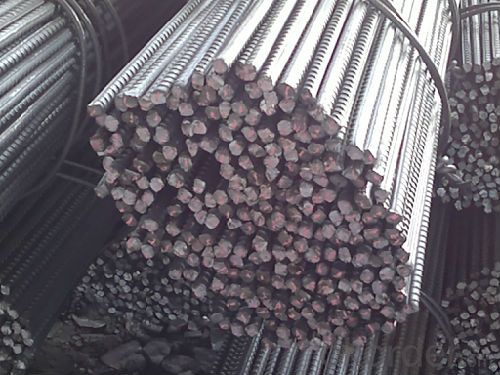
- Q: How can steel rebars be recycled after their service life?
- Steel rebars can be recycled after their service life by first removing them from the concrete structures. The rebars are then collected and taken to a recycling facility where they undergo a process called steel rebar recycling. In this process, the rebars are cleaned, sorted, and shredded into small pieces. These pieces are then melted down in a furnace and transformed into new steel products or rebars, which can be used for various construction purposes. Recycling steel rebars not only conserves natural resources but also helps to reduce waste and minimize environmental impact.
- Q: How are steel rebars protected from concrete spalling?
- Steel rebars are protected from concrete spalling through the use of various methods and techniques. One common method is to provide a concrete cover over the rebars. This means that the rebars are embedded within the concrete structure, ensuring that they are not directly exposed to external elements or conditions that could cause spalling. The thickness of the concrete cover is typically specified in construction codes and standards to ensure adequate protection. Another way to protect steel rebars from concrete spalling is by using corrosion inhibitors. These inhibitors are typically added to the concrete mix during the construction process. They work by reducing the corrosion rate of the steel rebars, thereby protecting them from spalling caused by rusting and corrosion. In addition to concrete cover and corrosion inhibitors, proper concrete mix design is crucial in protecting steel rebars. The use of high-quality concrete with appropriate water-cement ratio, sufficient strength, and proper curing greatly enhances the resistance of the concrete against spalling. This ensures that the rebars remain securely embedded within the concrete structure and are not exposed to moisture or other deteriorating agents that could lead to spalling. Furthermore, proper construction practices such as adequate compaction of concrete, proper placement and alignment of rebars, and effective waterproofing measures also contribute to the protection of steel rebars from concrete spalling. These practices help to minimize the chances of moisture ingress and the formation of cracks or voids that could expose the rebars to the risk of spalling. Overall, a combination of concrete cover, corrosion inhibitors, proper concrete mix design, and appropriate construction practices are essential in protecting steel rebars from concrete spalling. By implementing these measures, the durability and longevity of concrete structures can be significantly improved.
- Q: How do steel rebars contribute to the overall seismic resistance of a structure?
- Steel rebars contribute to the overall seismic resistance of a structure by providing reinforcement and strength to the concrete elements. The rebars help to distribute and dissipate the energy generated during an earthquake, which helps in reducing the potential damage and ensuring structural integrity. By increasing the ductility and flexural capacity of the structure, steel rebars help to absorb and withstand the seismic forces, making the building more resistant to collapse or significant structural damage.
- Q: How do steel rebars affect the seismic performance of a structure?
- Steel rebars significantly improve the seismic performance of a structure by enhancing its strength, ductility, and overall structural stability. Rebars help to distribute and dissipate seismic forces, reducing the risk of structural failure and collapse during an earthquake. By reinforcing concrete elements, rebars increase the structure's resistance to bending, tension, and shear forces, thereby improving its ability to withstand seismic ground motions and maintain its integrity.
- Q: Can steel rebars be bent on-site?
- Yes, steel rebars can be bent on-site using specialized tools and equipment.
- Q: What is the process of reinforcing concrete columns with steel rebars?
- To ensure the structural integrity and strength of concrete columns, the process of reinforcing them with steel rebars involves several steps. Initially, the required load-bearing capacity and other structural considerations are taken into account to determine the design and specifications of the concrete column. This involves deciding on the size, shape, and placement of the rebars within the column. Following this, temporary molds or frameworks in the desired shape and dimensions of the column are constructed as part of the concrete formwork preparation. These molds provide support and containment for the concrete during the pouring and curing stages. Once the formwork is ready, the steel rebars are meticulously positioned and fastened within it. They are typically arranged in a specific pattern to maximize reinforcement and strength, including vertical bars running along the length of the column and horizontal bars that wrap around the vertical ones. To maintain their position and prevent movement during the pouring of the concrete, the rebars are often tied together at intersections using wire or other fasteners. This ensures that the rebars are effectively embedded within the concrete and can properly reinforce the column. Once the rebars are securely in place, the concrete is poured into the formwork. The concrete mixture is carefully applied and consolidated to fully surround and encase the rebars, creating a composite material that is more resistant to cracking and deformation. After the concrete is poured, it is left to cure and harden, typically for a period of several days or weeks. This allows the concrete to gain strength and durability, ensuring effective bonding between the rebars and the concrete and enabling the column to bear the intended loads. Once the concrete has fully cured, the formwork is removed, revealing the reinforced concrete column. The rebars should be completely embedded within the concrete, providing additional strength and support to withstand the applied loads. In summary, reinforcing concrete columns with steel rebars involves careful planning, positioning, and securing of the rebars within the formwork, followed by the pouring, curing, and removal of the formwork. This process guarantees that the resulting reinforced concrete column is structurally sound and capable of withstanding the intended loads and forces.
- Q: How do steel rebars affect the thermal conductivity of concrete?
- Steel rebars have a negligible effect on the thermal conductivity of concrete, as they conduct heat at a much higher rate than concrete.
- Q: Can steel rebars be used in modular construction?
- Yes, steel rebars can be used in modular construction. Rebars are commonly used in reinforced concrete structures, and modular construction often involves the use of prefabricated concrete panels or modules that are assembled on-site. So, steel rebars can provide additional strength and reinforcement to these structures, making them suitable for modular construction projects.
- Q: Can steel rebars be used in buildings with high architectural requirements?
- Yes, buildings with high architectural requirements can utilize steel rebars. Steel rebars are extensively utilized in construction because of their strength, durability, and versatility. They offer structural integrity and reinforcement to concrete structures, making them appropriate for a vast array of architectural designs and requirements. Various architectural elements, including beams, columns, walls, slabs, and foundations, can incorporate steel rebars. They can be manipulated, molded, and joined together through welding to fulfill specific architectural designs, enabling the creation of intricate and complex structures. Furthermore, they can be tailored in terms of dimensions, length, and spacing, guaranteeing that they satisfy the architectural needs of the building. Furthermore, steel rebars possess resistance against fire, corrosion, and extreme weather conditions, making them suitable for buildings with high architectural requirements in terms of safety and durability. They provide a long-lasting solution, ensuring the preservation of the architectural vision and design for many years. In conclusion, buildings with high architectural requirements can certainly utilize steel rebars. Their strength, durability, versatility, and customization options make them an ideal selection for maintaining structural integrity while fulfilling the aesthetic and design requirements of the building.
- Q: In the concrete floor, how big can the steel bar be replaced by the big screw steel? How to convert?
- In theory, how big a round steel will have to replace the large thread steel, and if it is cast, then still better to use thread steel, screw steel tensile resistance than round steel by strong
Send your message to us
Hot Rolled Deformed Steel Bar HRB400
- Loading Port:
- China Main Port
- Payment Terms:
- TT or LC
- Min Order Qty:
- -
- Supply Capability:
- -
OKorder Service Pledge
OKorder Financial Service
Similar products
Hot products
Hot Searches
Related keywords
